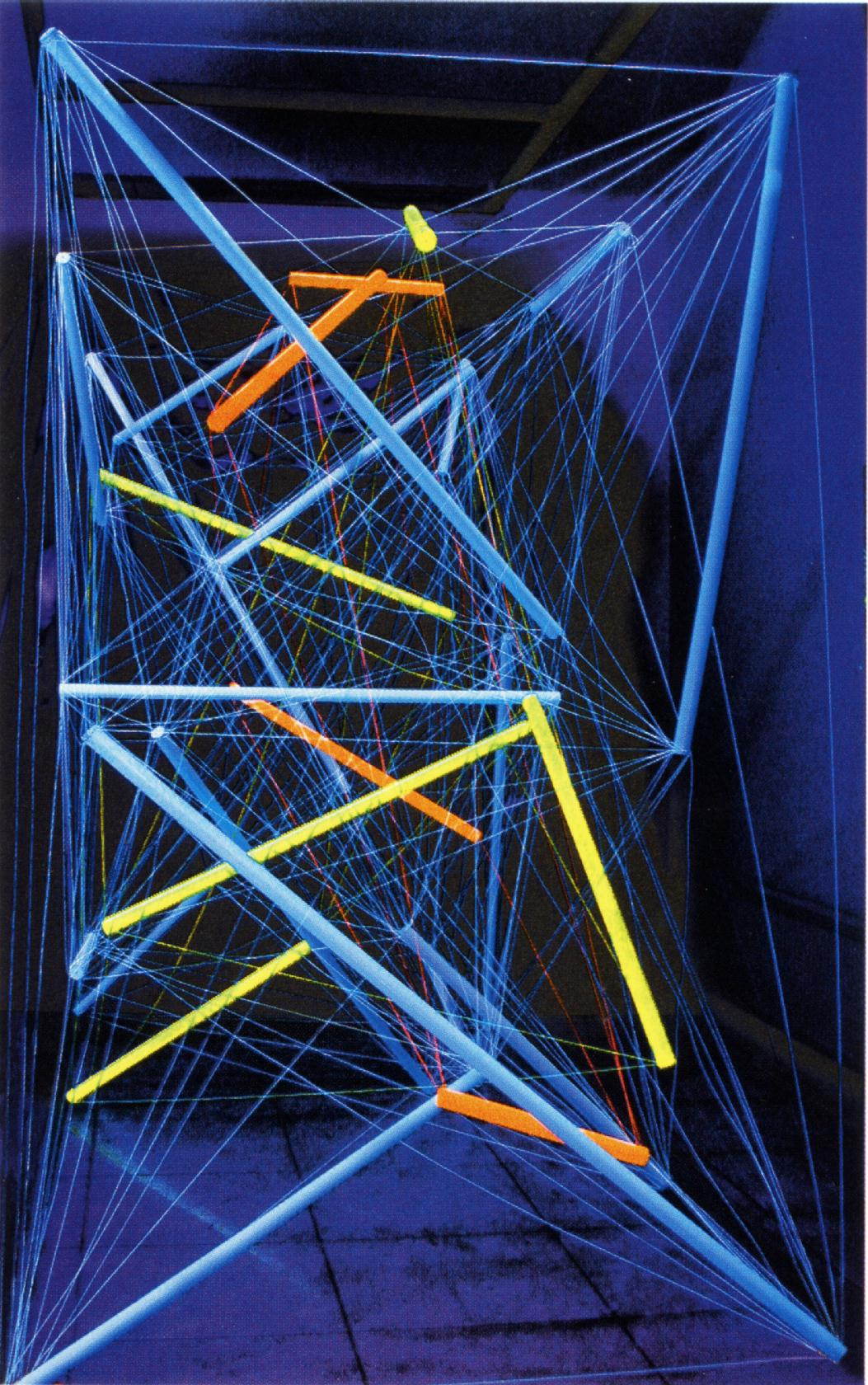MAGIC TRANSPARENCY
Museum Kiscell / Municpal Picture Gallery
May 8–June 8 2003
Curator: Peter Fitz
Mengyán-spaces In The Churchspace
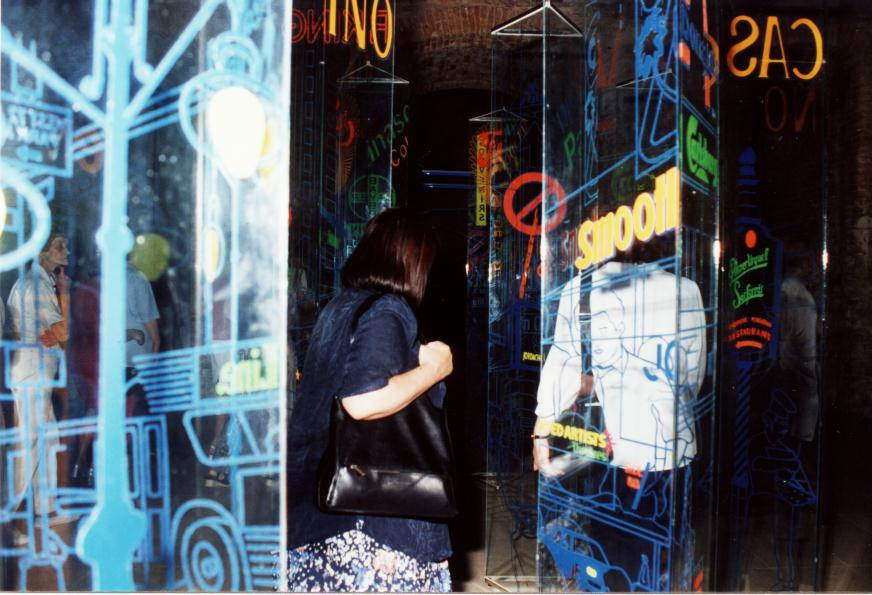
The art of András
Mengyán is a special case in Hungarian visual arts. Though his works
have been present for quite a long time both in Hungary and abroad he still
appears as a permanent outsider. This fact derives more from the circumstances
than from his personality or artwork. He has an extremely steadfast career
behind him: the focus of his interest has always been the interpretation
and the concrete formulation of space. The basic principle of his works
is permutation without repetition, the representation of space, time and
various dimensions. What interests him throughout his career is the independent
life of forms and the relations in-between them no matter if he makes "figurative"
or serial artpiece. On plane - printmaking, painting, film, video -, in
space - sculpture, installations -, or perhaps the represented aspects
in combinations of these two. 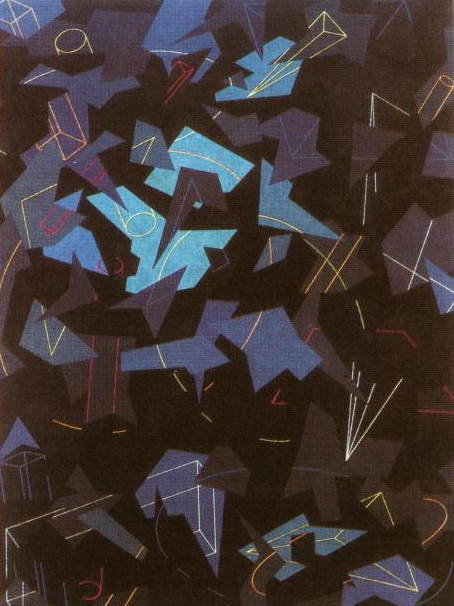
The Kiscell exhibition
is a comprehensive one to a certain extend because it refers to almost
all the elements of the complex art of Mengyán. On the other hand
its "where am I at now ?" shows the present as well. The space is structured
in three characteristically different units: the first one is in the sanctuary
part, the 17-dimensionTwin-space. Its prefiguration or archetype was the
Six-dimension Broken Line made in 1988. At a starting point that piece
was prepared on canvas i.e. on plane, whereas the work here hangs monumentally
in space. This piece is an expressive embodiment of the geometrical way
of thinking practised by Mengyán throughout his carreer: the ordering
of the basic visual components of forms in space. The colourful poles floating
in space with the help of many invisible thin plastic span ropes form a
multi-dimensional construction. The seemingly "dry" geometrical space-modell
is made of a special paint offering an interesting depth while illuminated
by UV light.
The second unit is the
Street I-III. This belongs to the more popular, almost figurative
works of Mengyán. He mentioned in one of his previous interviews
that while classifying the basic visual components he got to the point
where the connection between environment, nature and the outside world
and the arts became more important both for him and his public too. The
enviroment work titled Programable Space made in 1988
had already been based on this idea, but in that case the "ornamentation"
was played by a film projected on it. That art-ensemble systemizing
the visual stimuli and signs of the urban enviroment, vast number
of advertising lines and neon lights appears as paints on glass like a
transparent, traversable installation. The installation is showed
in its original sense: space-equipping and space-determination take place.
The tripartition is based on the idea of order-chaos-order or construction-deconstruction-construction. 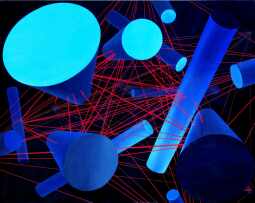
The third unit can be
connected to his previous artistic activities, too. The space-spirals of
the Interrupted Continuity refer to his early works e.g. the 1974 series
of Logic Of Forms. The difference is not merely a change of the transformation
from the plane-construction to the spatial dimension but also a difference
in quality. On a rectangle plane bordered by a screen a colourful spiral
starts from one corner and continues along through the whole field to the
opposit corner. The spiral rises up into space, it´s colourful, and
the interruptions - the continuity - is only optical. This artpiece too
is based on black light, and it may be a trivial solution in an "everyday
usage", but both in his space-installations and his paintings Mengyán
places the compositions into other dimensions .
All these regards to
his new paintings, too. The process wich started practically three decades
ago with unbroken renewal and conversion is still able to create new qualities.
Péter Fitz
The Magical Rationalist
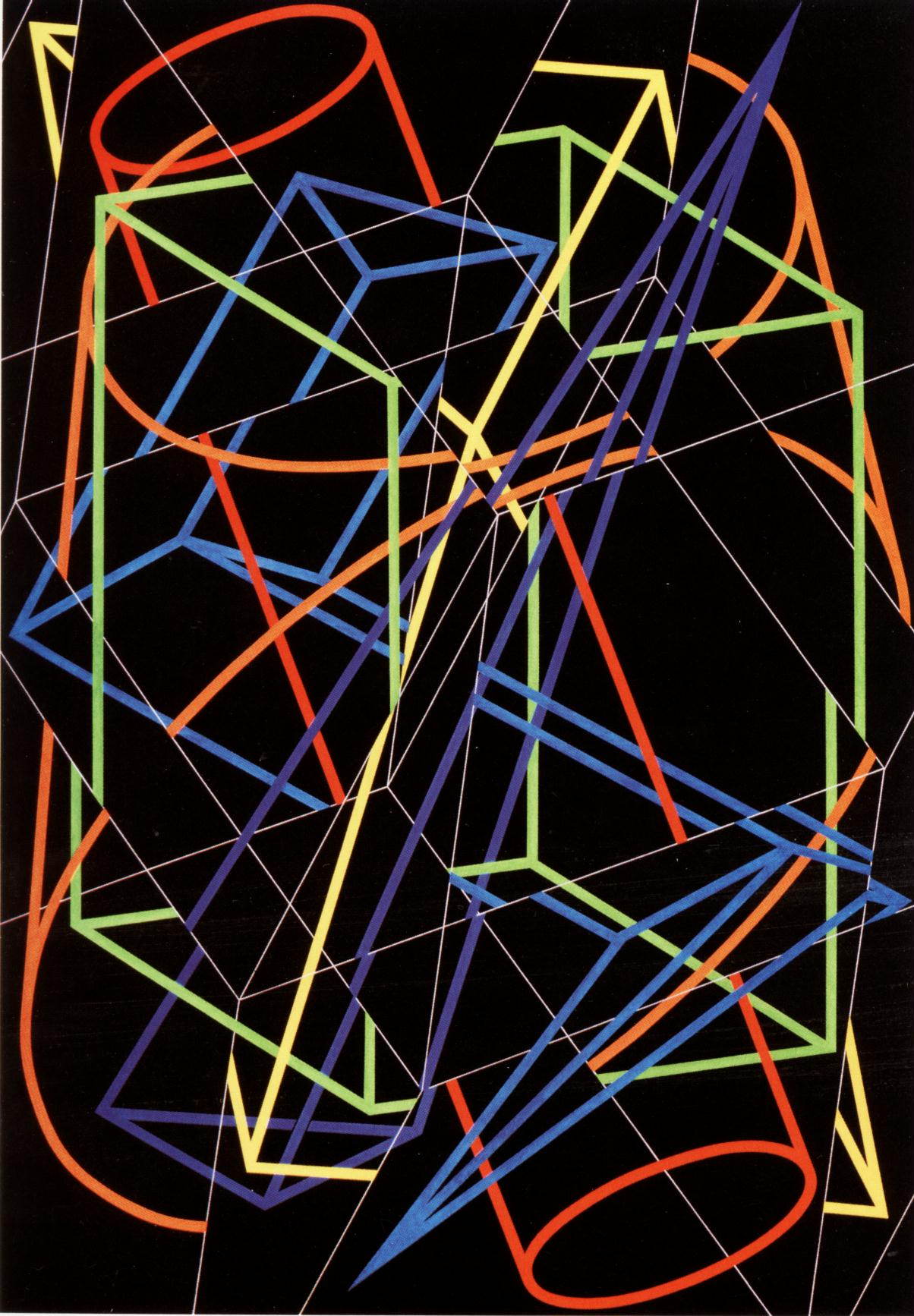
András Mengyán
is probably one of the most rational of the irrationalists - if there were
another such strange fellow of his kind. With dauntless stubbornness through
decades he has been examining, modelling and systemizing the persumably
common "rudiments" of the existing world and the arts, their movements
on plane and in space, their potential transformation and change. Many
and for long believed of him - surely even himself too - that he´s
one of the late orthodox constructivists, because he had built his pictures
almost exclusively in accordance with the obvious strictness of geometry
and mathemathics. But the true constructivists always stoped at a border
given by the limitation of their own tools: perhaps only the genius of
Malevich could see into the depth of the "black squares". Ceaselessly experimenting
Mengyán never thought the road would end there, he was always aware
of the fact that at one given moment and place only the chosen tools would
prove their insufficiency, therefore he could move on and on again towards
the unknown. Early he senced the fallability of the designed and ponderable
reality, and beginning from this point with growing intensity he tried
observing these new allusive dimensions behind things and phenomena. András
Mengyán knows well how impossible it would be to make a one-dimensional
creature understood what plane is, or even what line is: why would it be
easier for us to see into a seventeen-dimensional world? 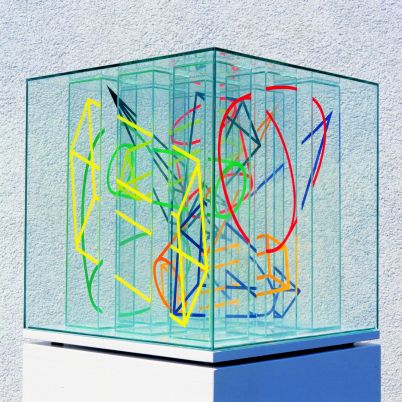
In the book-like catalouge
of the 1995 show in Mûcsarnok exhibit space Ildikó Nagy named
two basic principles in Mengyán´s creative attitude; "methodology"
and "curiosity". She drew our attention to the important changes in the
creative method, she wrote: "The order disappeared behind the oeuvre".
Mengyán formulated this in the volume with other words: "I wanted
to make the objective, formal analysis more personal". This kind of systematical
objectivity working with less perceptibility gives also credit to the three
compositions showed at the Kiscelli Museum´s Churchspace: this gripping,
mythical space carries a promise to a new reality in such way that the
artist doesn´t have to deceive the spectators. Mengyán doesn´t
for a second denies his tools and schooling but at the right moment he
lets the viewer´s hand off leaving him/her, letting them to soar
towards the freedom of spirit.
Péter Kovács
